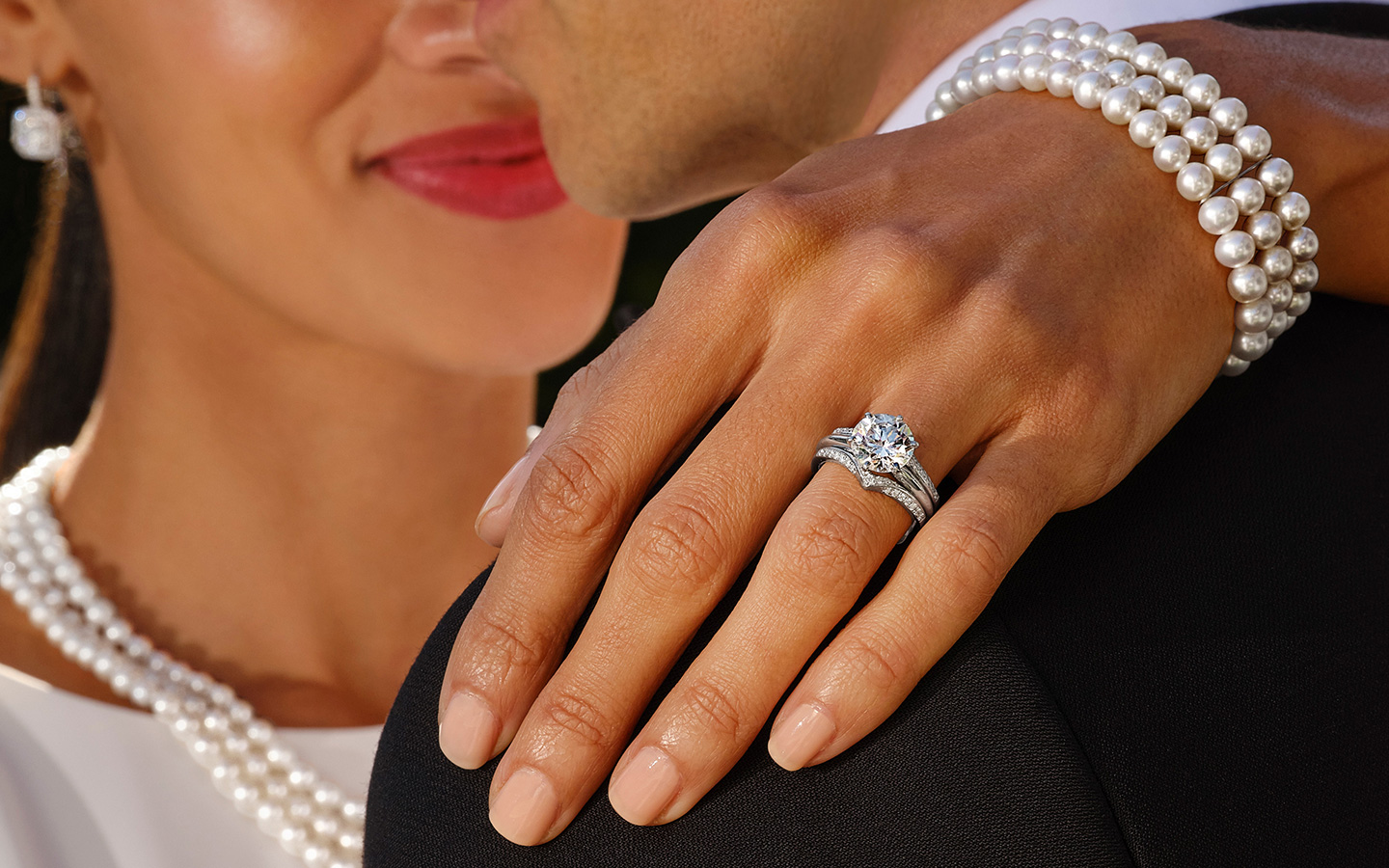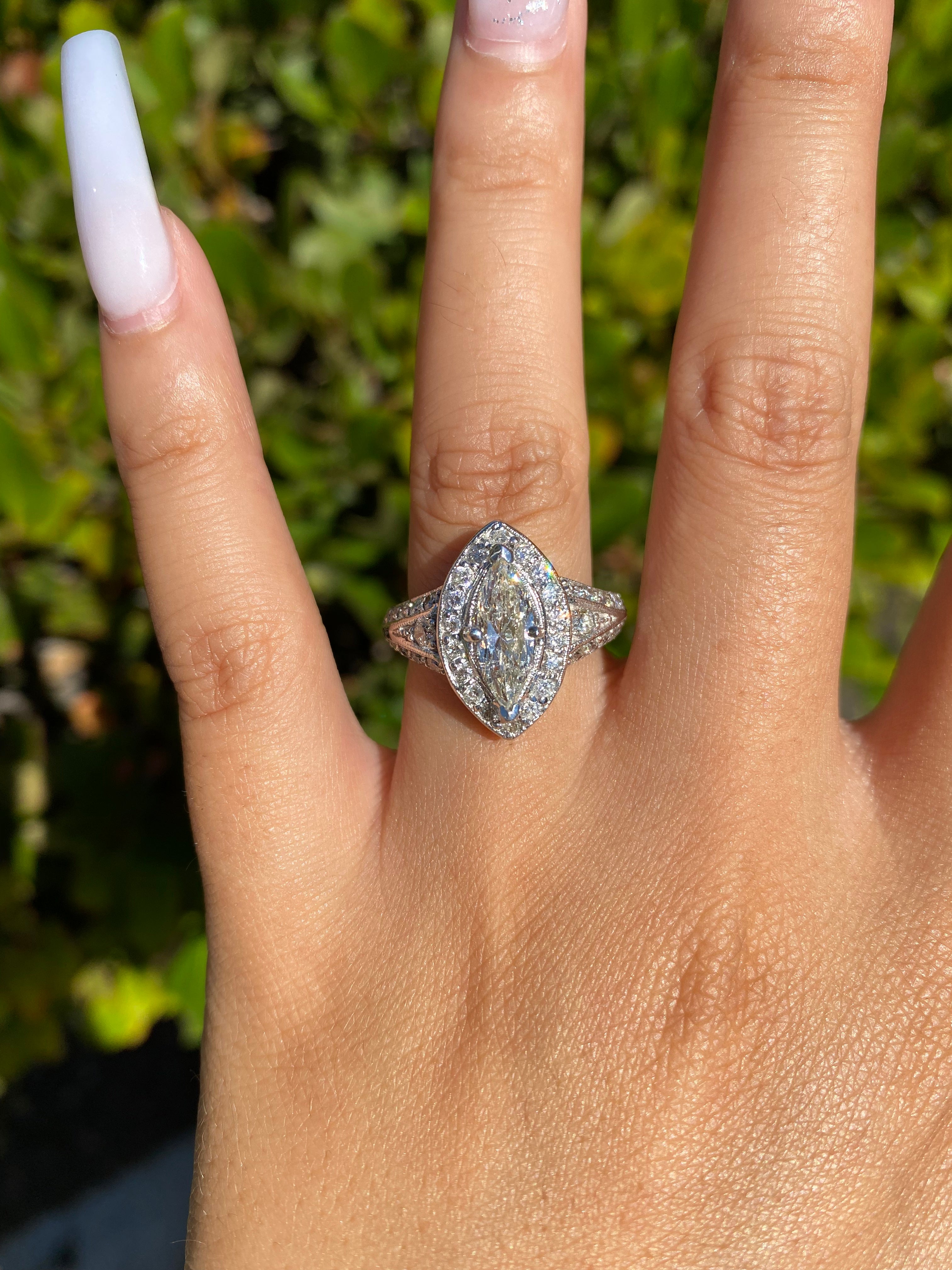Comprehending the Advantages of Laboratory Grown Diamond Interaction Rings in Today's Market
Lab-grown Diamond interaction rings are becoming progressively preferred in today's market. These choices to mined diamonds use a variety of advantages that attract modern-day customers. From ecological sustainability to set you back financial savings, lab-grown rubies present an engaging option. Their improved high quality and personalization options further add to their appeal. However, the expanding passion questions concerning the ramifications of these choices. What variables should pairs take into consideration when selecting lab-grown over conventional rubies?
The Environmental Benefits of Lab-Grown Diamonds
As consumers significantly prioritize sustainability, lab-grown diamonds emerge as a compelling choice to their extracted counterparts. These artificial gems are produced in controlled settings, considerably reducing the eco-friendly footprint connected with conventional Diamond mining. The removal of all-natural diamonds frequently results in habitat damage, soil disintegration, and water air pollution, ravaging neighborhood ecological communities. In comparison, lab-grown rubies need less land and water, reducing resource exhaustion.
Additionally, the energy utilized in the development of lab-grown diamonds can be sourced from renewable resource, further diminishing their environmental influence. This process not just aesthetics carbon exhausts yet additionally promotes sustainable methods within the jewelry market. Consumers that go with lab-grown diamonds add to a more eco pleasant and ethical market, aligning their purchasing options with their values. Generally, lab-grown rubies provide an option that harmonizes luxury with ecological duty, appealing to an expanding group worried about sustainability.
Cost-Effectiveness of Lab-Grown Involvement Rings
While numerous couples seek to balance high quality and budget when picking engagement rings, lab-grown rubies use an economical alternative without jeopardizing on appeal or longevity. Typically priced 20-40% reduced than their natural counterparts, lab-grown diamonds enable couples to designate their spending plan much more flexibly, making it possible for bigger carat weight sizes or greater high quality rocks for the exact same cost. This cost does not take away from the visual charm; lab-grown rubies exhibit the exact same radiance and quality as extracted diamonds, many thanks to identical chemical and physical buildings. In addition, the market for lab-grown diamonds is increasing, causing competitive prices and boosted availability. Couples can additionally appreciate a broader variety of designs and settings without the financial stress commonly connected with conventional rubies. On the whole, lab-grown engagement rings provide an appealing monetary choice, making them increasingly popular among contemporary pairs that prioritize both price and high quality in their investing in choices.
Honest Factors To Consider in Choosing Lab-Grown Diamonds

Consumers are progressively worried concerning the origins of their purchases, and lab-grown diamonds supply a clear supply chain. Each Diamond comes with accreditation outlining its production procedure, making sure customers can make enlightened selections. The manufacturing of these rubies often uses renewable energy sources, further lining up with eco-conscious worths. For people focusing on ethical usage, lab-grown diamonds provide a responsible alternative that combines deluxe with ethical honesty, interesting modern perceptiveness in involvement ring selections.

Quality and Beauty: Comparing Lab-Grown and Mined Diamonds
The contrast between lab-grown and mined rubies exposes noteworthy distinctions in aesthetic characteristics and durability. Lab-grown rubies frequently exhibit remarkable clearness and color uniformity, while extracted diamonds can offer distinct additions and variants. In addition, both types share the exact same solidity, making them just as ideal for involvement rings.
Aesthetic Attributes Comparison
How do lab-grown diamonds contrast to their mined equivalents pertaining to visual attributes? Both kinds of rubies share similar physical and chemical properties, making it challenging to distinguish in between them without specific devices. Lab-grown diamonds commonly display fewer inclusions and blemishes, resulting in superior clarity. In addition, they can be generated in a bigger series of shades, enabling one-of-a-kind customization alternatives. While extracted diamonds are valued for their natural beginning and regarded rarity, lab-grown diamonds can achieve equivalent charm and luster, typically at a reduced cost. Inevitably, the option between the two may come down to individual preference, however aesthetically, lab-grown rubies stand as an engaging option, boasting top quality that equals their all-natural equivalents.
Durability and Firmness Factors
While both lab-grown and extracted diamonds possess phenomenal sturdiness, their solidity stays a defining characteristic that highlights their suitability for daily wear. Rubies are rated a 10 on the Mohs range of mineral solidity, making them the hardest natural product known (lab grown diamond engagement rings). This characteristic assurances that both types of diamonds stand up to damaging and maintain their radiance gradually. Lab-grown rubies, produced under controlled problems, show the same hardness and physical homes as their mined counterparts. As an outcome, they provide a resilient and eye-catching choice for engagement rings. Consumers can confidently select either kind, knowing that both offer enduring top quality. Eventually, the selection between lab-grown and mined rubies might come down to individual worths instead of differences in resilience or firmness
Personalization Options for Lab-Grown Diamonds
Lab-grown rubies use a vast array of personalization options that accommodate private choices. From special layout possibilities to different color and cut options, these diamonds can be customized to match any individual design. This degree of personalization warranties that each involvement ring can show the distinctive tastes of the user.
Distinct Layout Opportunities
Countless design opportunities await those interested in lab-grown Diamond interaction rings, allowing couples to reveal their one-of-a-kind romance. With the adaptability of lab-grown rubies, designers can explore a variety of designs, from traditional jewelry to detailed vintage setups. Pairs can select from numerous forms, such as round, princess, or emerald cuts, each providing an unique character. In addition, the capability to pick unique metal kinds, consisting of white gold, climbed gold, or platinum, additional improves customization. Lab-grown rubies can also be fairly sourced in various carat weight weights, allowing pairs to discover the excellent equilibrium between size and budget plan. This adaptability enables each ring to show the individual see this site tastes and preferences of the pair, making it a truly personal sign of their dedication.
Customization for every single Style
The flexibility of lab-grown rubies expands beyond distinct style opportunities, supplying extensive customization alternatives to fit every pair's design. Pairs can choose from numerous settings, steels, and band styles, ensuring that their involvement ring mirrors their individuality. Choices range from traditional jewelry to modern-day halo styles, permitting personal expression in every option. Additionally, pairs can choose specific features such as engraving, including nostalgic value and uniqueness to their rings. The ability to personalize warranties that each ring is not just a representation of love yet likewise a reflection of personal preference and lifestyle. This level of personalization makes lab-grown diamonds an attractive option for those looking for a significant and distinct interaction ring.
Shade and Cut Options
Interaction rings including lab-grown rubies offer a spectacular selection of color and cut options that boost their appeal and individuality. Unlike standard diamonds, lab-grown choices can be generated in a comprehensive series of colors, including pink, blue, and yellow, allowing couples to choose a distinctly individual touch. These dynamic colors can serve as a purposeful depiction of love and commitment.
Lab-grown rubies come in numerous cuts, including oval, round, and princess, each adding to the stone's brilliance and visual appeal. This versatility enables couples to customize their rings to reflect their designs and preferences. Ultimately, the accessibility of diverse shade and cut options makes lab-grown Diamond engagement rings a preferred choice for modern-day pairs seeking personalization.
Fads and Appeal of Lab-Grown Diamonds in 2023
As consumers increasingly focus on sustainability and moral considerations in their investing in choices, the appeal of lab-grown diamonds has risen in 2023. This year, the market has experienced a significant shift, with even more couples going with these diamonds due to their lower environmental effect and transparent sourcing procedures. Lab-grown rubies are not only considerably more inexpensive than their extracted equivalents, yet they likewise supply an array of styles and modification alternatives that attract news contemporary consumers.
Retailers have replied to this expanding trend by broadening their collections and highlighting the unique high qualities of lab-grown rocks, such as their brilliance and quality. Social media and influencer recommendations have actually further enhanced awareness, making lab-grown diamonds a classy selection for engagement rings. As education and learning regarding the benefits proceeds to spread, it is prepared for that the market share of lab-grown diamonds will proceed to increase, strengthening their place in the jewelry market.
Frequently Asked Inquiries
How Are Lab-Grown Diamonds Created in a Research laboratory?
Lab-grown diamonds are created using two main techniques: High Pressure Heat (HPHT) resembles all-natural Diamond formation conditions, while Chemical Vapor Deposition (CVD) utilizes gas to precipitate carbon onto a substratum, forming diamonds layer by layer.
Do Lab-Grown Diamonds Hold Their Worth Gradually?
Lab-grown diamonds normally do not hold their value in addition to all-natural rubies. Market variations and customer assumptions affect resale costs, bring about lower lasting worth retention for lab-grown choices compared to their natural equivalents.
Can Lab-Grown Diamonds Be Resized Like Mined Diamonds?
Lab-grown rubies can be resized likewise to extracted rubies, as they possess similar physical residential properties. Jewelers commonly utilize standard strategies for resizing, making certain that both kinds of diamonds preserve their honesty and aesthetic charm throughout the process.
Are Lab-Grown Diamonds Available in Different Forms and Sizes?
Lab-grown rubies are without a doubt readily available in a range of forms and dimensions. They can be customized to meet private choices, offering choices like round, princess, oval, and emerald cuts, to name a few, making certain varied selections for consumers.
Just how Do I Confirm the Credibility of a Lab-Grown Diamond?
To verify the credibility of a lab-grown Diamond, one need to get in touch with a respectable jeweler or get a certification from an acknowledged grading research laboratory, which typically includes information regarding the Diamond's beginning and features.
Lab-grown rubies are developed in regulated environments, removing the ecological destruction commonly linked with standard Diamond mining. lab grown diamond engagement rings. Lab-grown diamonds usually display superior clarity and shade uniformity, while mined diamonds can provide one-of-a-kind additions and variations. While mined see here now rubies are valued for their natural origin and regarded rarity, lab-grown rubies can attain equivalent appeal and luster, usually at a lower cost. Lab-grown rubies normally do not hold their worth as well as all-natural diamonds. Lab-grown diamonds can be resized in a similar way to extracted diamonds, as they have comparable physical properties